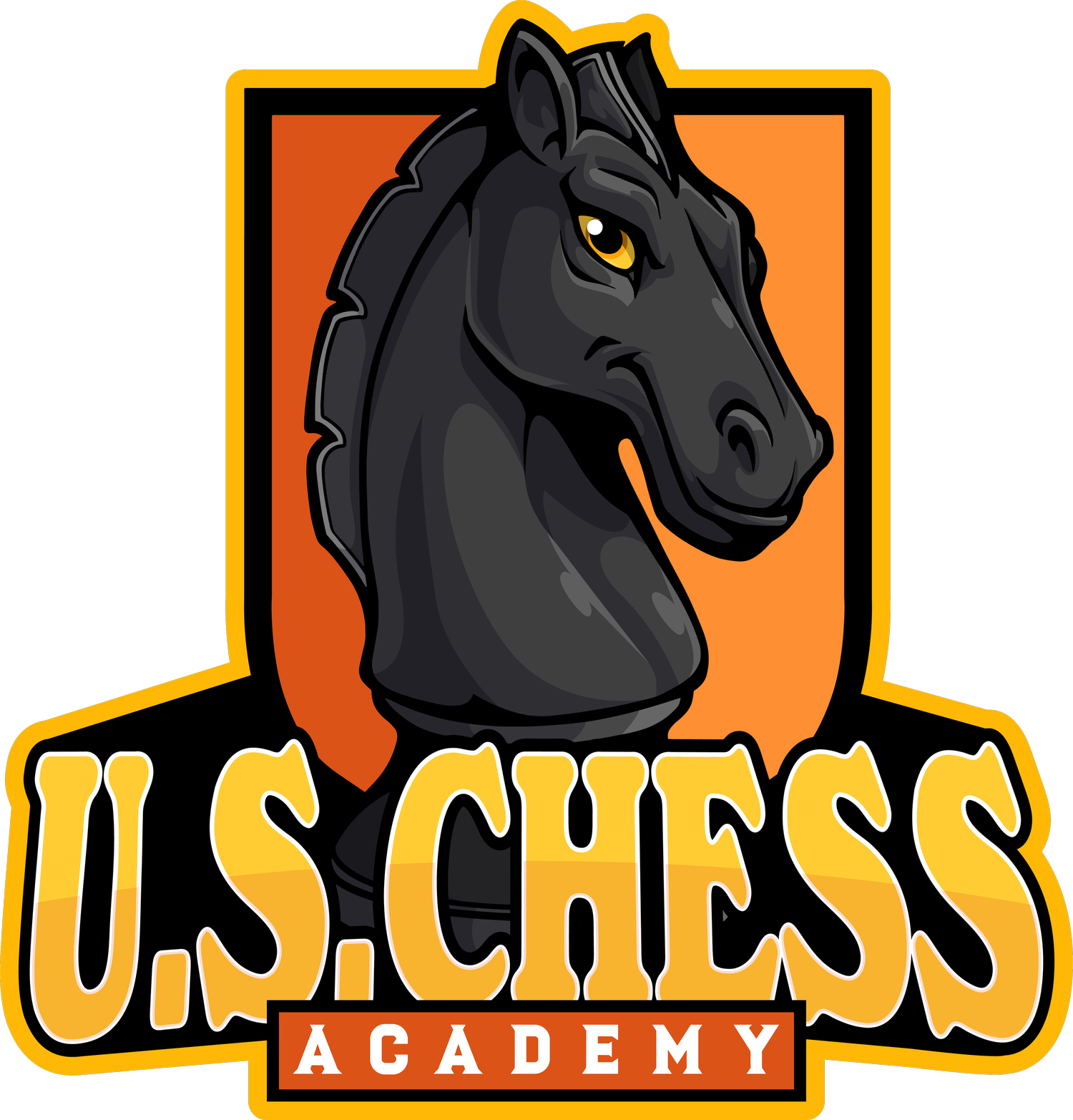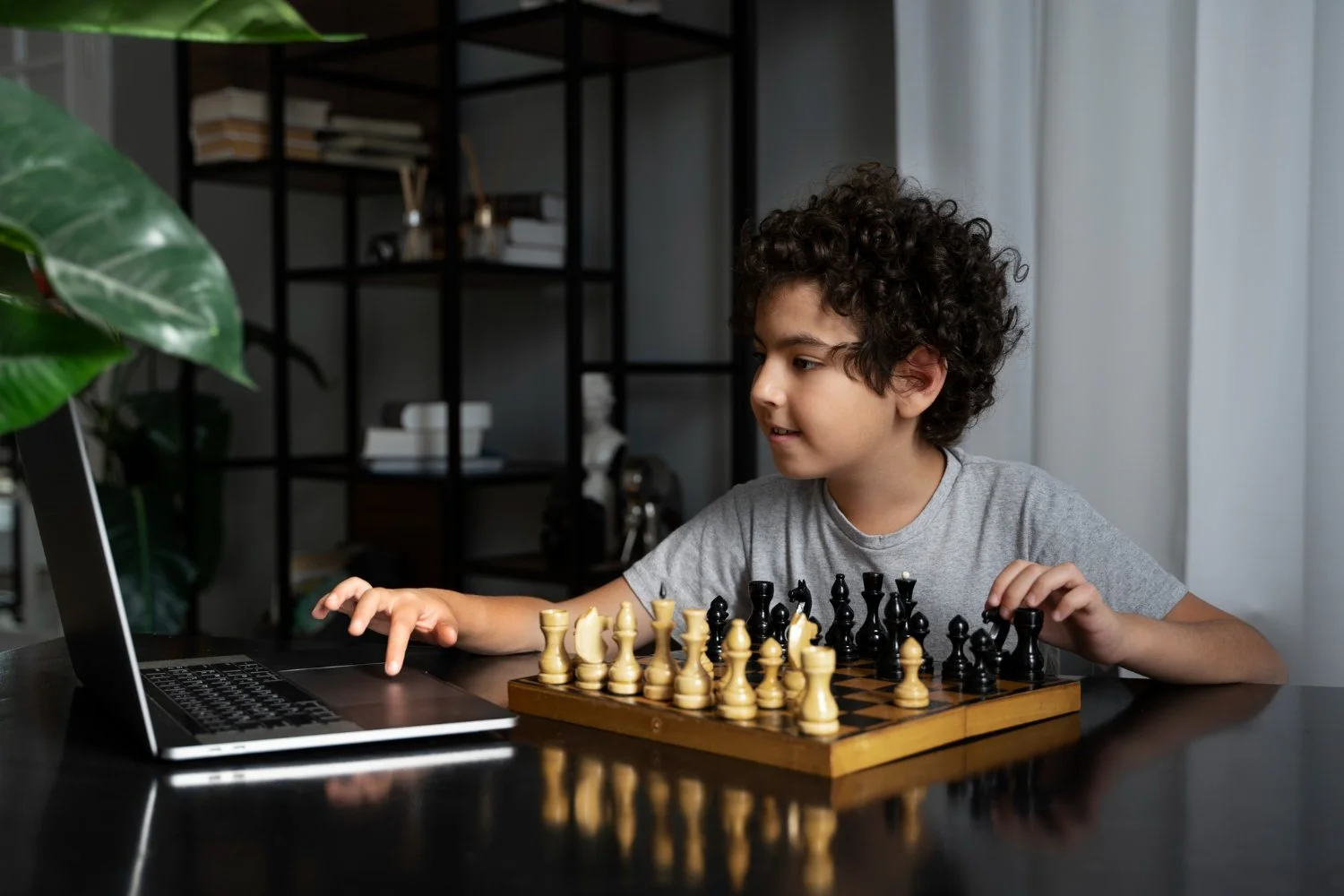Screen Time Management for Online Chess Students
Online chess classes have made learning the game easier for families across Manhattan. From the comfort of home, students can log in, train, and play during the school year or in their free time. It’s flexible, convenient, and offers students access to quality instructors and a great chess community. That said, with more and more time spent learning and playing online, managing screen usage becomes really important.
Too much screen time can wear down a student’s energy levels, shorten their attention span, and make it harder for them to stay focused, even if they're passionate about chess. When a child sits in front of a screen for hours without breaks, it not only affects their learning but can also cause mental and physical strain over time. And when chess is a daily part of their schedule, those hours can pile up fast. Managing this screen time doesn’t mean cutting back on lessons. It just means learning how to approach it a little differently, and more mindfully.
Understanding Screen Time Issues
Spending more hours in front of a screen can lead to a few problems for online chess students. Since chess already requires a lot of focus and mental effort, adding long digital sessions without proper breaks can cause burnout. Many families might think more screen time equals faster progress, but it often works the other way around when balance isn’t maintained.
One of the first issues that shows up is physical tiredness. This includes eye strain, headaches, or even back and neck pain from sitting in the same position for too long. It seems small at first, but these little things can make students dread sitting down to play or study. Mentally, they may also feel more frustrated, impatient, or find it harder to concentrate. Chess requires patience and clear thinking, both of which are tough to keep up if someone feels fried from too much time online.
Academics can take a hit, too. After sitting a long time in class digitally, then jumping straight into an online chess session without fresh air or a screen break, kids may lose motivation to do anything else, including homework or reading. Attention slips. Focus during lessons drops. And even the love for chess might fade a bit.
A good example is a student who attends school online, then joins two hours of online chess lessons, then practices a few games on their own. At first, that might sound like a productive day. But when back-to-back sessions have no break for fresh air or physical movement, fatigue shows up quickly. This can make both learning and enjoyment feel like a chore instead of something to look forward to.
It can sneak up quiet and slow. But when too much screen time gets in the way, it’s time to switch things up.
Strategies For Effective Screen Time Management
Once families start to notice the signs of screen fatigue, the good news is there are ways to shift the schedule without losing out on anything chess-related. It starts with being clear about how time is spent and setting limits that work for the student's age, energy level, and learning goals.
Here are a few practical strategies that might help:
1. Create a daily screen time window. Map out what part of the day is best for chess learning. For some it might be early afternoons, for others after dinner. Try to keep it under a set time every day.
2. Take short breaks between lessons and games. Every 45 minutes, give five to ten minutes to move around. Simple things like walking, jumping jacks, or even a snack break can reset focus fast.
3. Mix digital learning with paper activities. Use printed chess puzzles or old-school scorecards. They give the eyes a rest and still count as real practice.
4. Use a timer. This keeps everyone honest about how long they've been working. Stop when the timer goes off, even if you're mid-drill.
5. Add off-screen hobbies into the routine. Whether it's walking the dog, drawing, or riding a bike, doing something else for a bit each day helps recharge the brain.
Too many families try to power through with longer hours, thinking it will pay off quicker. But with chess, progress sticks best when the brain gets time to rest. Learning to play smarter, both on the board and with screen time, makes the difference over the long run. Simple schedules, active breaks, and offline practice can go a long way, especially for young chess learners who need rhythm in their day.
Tools and Apps for Monitoring Screen Time
When you're trying to get a better handle on screen time, the right tools can make things a lot easier. For students learning chess online, tracking how long they’re in lessons, playing games, or watching recaps can help spot when things may be going overboard. It’s often the case that both kids and adults underestimate how much time they’re actually spending in front of a screen. That’s why a screen-time tracking app can be a good starting point for small changes that make a big difference.
Several apps allow parents to set limits, filter content, and get insights into daily usage. Some services break time down by specific apps or websites, so parents can clearly see how much time is spent on learning versus leisure. Other options let you block access to chess platforms after a certain number of minutes to help build better habits.
A few things to look for when picking a screen-time tool:
- Easy-to-read dashboards to keep tabs on how time is spent without digging through multiple tabs or menus
- Custom timers that reset daily instead of weekly so the student can gauge limits one day at a time
- Downtime settings that allow scheduled off hours where devices automatically block chess websites or apps
- App-specific limits for lessons, games, or browsing to allow longer time for studying and shorter for play
- Alerts and nudges that remind the student when it's time to take a break or stretch
The goal isn't to cut fun short. It's to create repeatable habits that keep online chess learning fresh, focused, and enjoyable without burnout. Kids may resist at first, especially if they’re really into the game. But most begin adjusting easily when there’s a clear schedule and expectations in place.
Benefits of Balanced Screen Time for Online Chess Classes
Managing screen time doesn’t just support better posture and stronger concentration. It also improves how students play and absorb new concepts. When a student has the right balance between digital learning and mental recovery, they’re more likely to remember key patterns, piece relationships, and tactics. They stay engaged in games longer and handle competitive play with sharper thinking.
Students who regularly step away from screens come back with more energy. A 10-year-old who just played tag outside before a lesson may focus better than one who has been online for four hours straight, even with high motivation. The brain works better when it’s not overloaded. And that benefits how chess is played, learned, and enjoyed.
A balanced approach also encourages motivation. Too much screen time tends to turn chess into a chore, especially for younger kids. When students have other fun activities built into their day, they’re more likely to look forward to chess time. That’s when learning really takes root.
In the longer term, students also gain self-awareness. They begin recognizing when they’re mentally tired or when they've spent too long online. That observation becomes useful over time, helping them build routines that fit their energy, attention, and goals.
Chess in Manhattan: Embracing a Healthy Screen-Life Balance
In places like Manhattan, sticking to screen-time limits opens the door to lots of activities that support a strong chess journey. There’s no shortage of parks, community centers, and neighborhood groups where students can unplug, refresh, and connect with others in person.
Some local students enjoy playing quick board games near Prospect Park or visiting smaller chess tables around public playgrounds. With all the outdoor options available, families don’t have to feel stuck indoors. Even a short meetup at a nearby coffee shop with fellow players brings variety and face-to-face energy.
Other ways to add movement and balance to a student’s day:
- Join a weekend chess club that meets in person
- Visit afterschool programs that offer board games and problem-solving activities outside of screens
- Take a walk between rounds during an online tournament
- Pair an online chess lesson with an offline workbook or tactics sheet
- Spend actual social time with chess friends instead of chatting through screens
Manhattan gives families the chance to stay connected with chess and with the real world around them. When digital tools and local experiences work together, a student can enjoy the best of both without the burnout.
Embrace a Healthier Chess Journey
Balancing chess learning with quiet time away from screens doesn’t have to be hard. With a few smart changes and more attention to how time is used, students can get more from their lessons while feeling good doing it.
Manhattan families who make space for movement, breaks, outdoor play, and real-life chess moments often find that online learning gets a lift. Focus comes easier. Kids stay more upbeat. And chess feels exciting again, instead of just another thing to check off in a long screen-filled day.
The effort pays off over time. And when students feel refreshed and confident, they step to the board ready to play their best.
Achieving balance in screen time paves the way for a more engaging and effective chess learning experience. To explore how you can build on this progress, take a look at our online chess classes at United States Chess Academy. Each program is shaped to keep students challenged and focused while supporting healthy digital habits.

